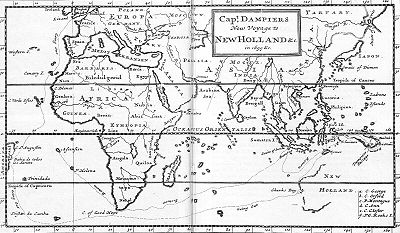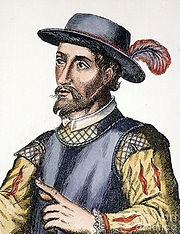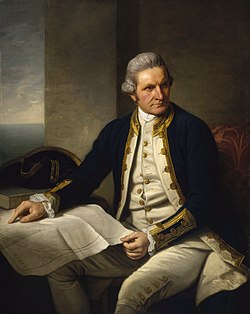
Cabot was born in either 1450 or 1451 in Genoa, Gaeta, or Chioggia. When he was 11, he moved to Venice and became a Venetian citizen. Like other Italian explorers of the era, such as Christopher Columbus (Cristoforo Colombo), Cabot made another country his base of operations. For Cabot it was England, so his explorations were made under the English flag. The voyage that saw him and his crew discover the North American mainland – the first Europeans known to do so since the Vikings – took place in 1497, five years after Columbus' discovery of the Caribbean. Again, like Columbus, Cabot's intention had been to find a westerly sea route to Asia.
It was probably on hearing of Columbus's discovery of 'the Indies' that he decided to find a route to the west for himself. He went with his plans to England, because he incorrectly thought spices were coming from northern Asia; and a degree of longitude is shorter the further one is from the equator, so the voyage from western Europe to eastern Asia would be shorter at higher latitudes.
King Henry VII of England gave him a grant to go on "full and free authoritie, leave, and power, to sayle to all partes, countreys, a see as, of the East, of the West, and of the North, under our banners and ensignes, with five ships ... and as many mariners or men as they will have in saide ships, upon their own proper costes and charges, to seeke out, discover, and finde, whatsoever iles, countreyes, regions or provinces of the heathen and infidelles, whatsoever they bee, and in what part of the world soever they be, whiche before this time have beene unknowen to all Christians."
Cabot went to Bristol to make the preparations for his voyage. Bristol was the second-largest seaport in England, and during the years from 1480 onwards several expeditions had been sent out to look for Hy-Brazil, an island said to lie somewhere in the Atlantic Ocean according to Celtic legends. Some people even think Newfoundland may have been found on one of these voyages.
In 1496 Cabot set out from Bristol with one ship. But he got no further than Iceland and was forced to return because of disputes with the crew. On a second voyage Cabot again used only one ship with 18 crew, the Matthew, a small ship (50 tons), but fast and able. He departed on either May 2 or May 20, 1497 and sailed to Dursey Head, Ireland. From there he sailed due west to Asia - or so he thought. He landed on the coast of Newfoundland on June 24, 1497. His precise landing-place is a matter of controversy, either Bonavista or St. John's. He went ashore to take possession of the land, and explored the coast for some time, and probably departed on July 20. On the homeward voyage his sailors thought they were going too far north, so Cabot sailed a more southerly course, reaching Brittany instead of England, and on August 6 arrived back in Bristol.
The location of Cabot's first landfall is not definitely known, due of lack of surviving evidence. Many experts think it was on Cape Bonavista, Newfoundland, but others look for it in Cape Breton Island, Nova Scotia, Labrador, or Maine. Cape Bonavista, however, is the location recognised by the governments of Canada and the United Kingdom as being Cabot's official landing. His men may have been the first Europeans to set foot on the American mailand since the Vikings. Christopher Columbus did not find the mainland until his third voyage, in 1498, and letters referring to a voyage by Amerigo Vespucci in 1497 are generally believed to have been forgeries or fabrications.
Back in England, Cabot was made an admiral, rewarded with £10 and a patent was written for a new voyage. Later, a pension of £20 a year was granted him. The next year, 1498, he departed again, with 5 ships this time. The expedition made for an Irish port, because of distress. Except for one ship, Cabot and his expedition were never heard from again and are presumed to have been lost at sea. John's son, Sebastian Cabot, later made a voyage to North America, looking for the hoped for Northwest Passage (1508), and another to repeat Magellan's voyage around the world, but which instead ended up looking for silver along the Río de la Plata (1525-8).
















